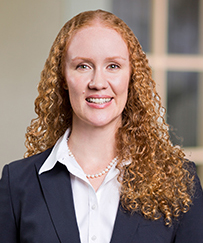We are pleased to report that many bankruptcy judges responded to our survey on the use of mediation in their courts. The response rate was 26 percent, and we are told this is a very high rate of return. We appreciate the time and effort each of the participating judges expended in this effort and hope you will find this summary of results to be useful.
Sites Committee
Committees
Although numerous issues intertwining bankruptcy affect divorce claims, some divergent bankruptcy matters need to be brought to the attention of most domestic attorneys representing the party to whom obligations are owed: (1) your client’s divorce-related debt will not be discharged and you do not need file an adversary proceeding to preserve the debt; (2) do not over-litigate your client’s int
Creditors seeking to foreclose in state court on their real property liens frequently find their efforts frustrated by serial bankruptcy filers attempting to use the protections of the automatic stay to delay the foreclosure.
An amendment to Rule 3015(c)(1) is currently under review that will permit courts to “opt out” and use a Local Form Plan. Public comment ended on Oct. 3, 2016, and it looks as if Official Form 113, also known as the National Form Plan, and the related Rule amendments will go into effect on Dec. 1, 2017, absent intervention from the Judicial Conference, the Supreme Court or Congress.
Bankruptcy courts are faced with increasing discovery disputes over electronic discovery. One increasingly prevalent topic of contention is the production and use of metadata, which can be used in a variety of ways in avoidance actions and other adversary proceedings.
Bankruptcy trustees often find that by the time a case has commenced, potential fraudulent transfers are already so far in the past that they are beyond the reach of the two-year look-back period under § 548 of the Bankruptcy Code.
In In re Clark,[1] the Bankruptcy Appellate Panel for the Ninth Circuit affirmed a bankruptcy court’s determination to substantively consolidate an individual’s chapter 7 bankruptcy estate with the assets of a non-debtor limited liability company ranch and a trust that the debtor controlled.
Real estate debtor principals who guaranty a debtor’s debts often face uphill battles to obtain stays pursuant to § 105 of the Bankruptcy Court of guaranty actions against them by secured creditors of the debtor. The bankruptcy court in In re Chicora Life Center, LC[1] recently issued such a stay.
Not many founders of a new business consider, at the time the new business is founded, the potential U.S. federal income tax consequences to them should the new business fail. The type of business entity formed, and the treatment of that entity for U.S. federal tax purposes as either a corporation or a pass-through entity, can have a material U.S.
Section 363 of the Bankruptcy Code provides for a trustee or debtor-in-possession to sell property of the bankruptcy estate outside of the ordinary course of business. To facilitate such sales, § 363(f) of the Bankruptcy Code permits a trustee or debtor-in-possession to sell such property “free and clear of any interest in such property” under certain circumstances.









